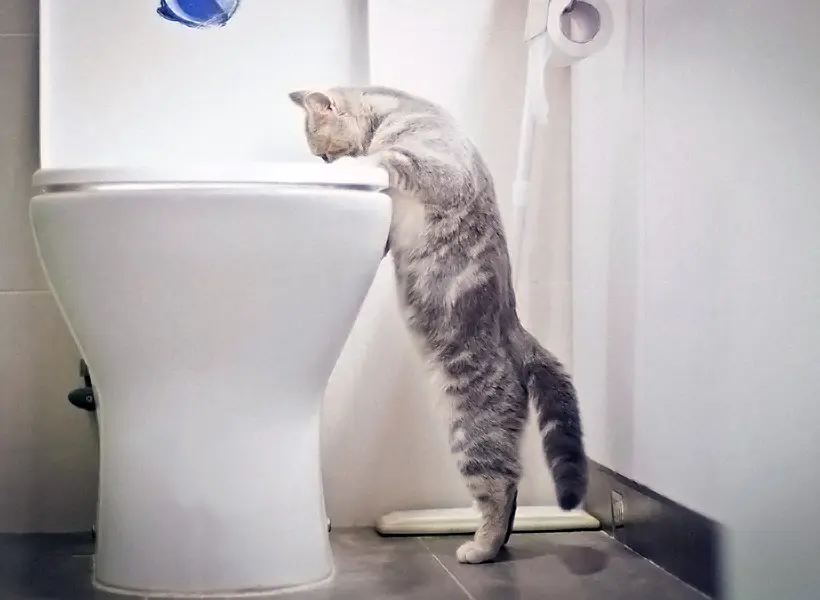Reasons Flushing Cat Poop Down Your Toilet May Cause Problems - Recommendations for Proper Handling
Reasons Flushing Cat Poop Down Your Toilet May Cause Problems - Recommendations for Proper Handling
Blog Article
We've uncovered this great article about How to Dispose of Cat Poop and Litter Without Plastic Bags below on the internet and accepted it made perfect sense to share it with you in this article.

Intro
As pet cat owners, it's important to bear in mind just how we throw away our feline close friends' waste. While it may seem convenient to flush cat poop down the toilet, this practice can have harmful repercussions for both the setting and human health and wellness.
Alternatives to Flushing
Luckily, there are much safer and much more responsible ways to deal with pet cat poop. Take into consideration the adhering to choices:
1. Scoop and Dispose in Trash
One of the most typical technique of taking care of pet cat poop is to scoop it into a naturally degradable bag and throw it in the garbage. Be sure to utilize a dedicated trash scoop and throw away the waste quickly.
2. Usage Biodegradable Litter
Select naturally degradable pet cat clutter made from materials such as corn or wheat. These clutters are eco-friendly and can be safely taken care of in the garbage.
3. Hide in the Yard
If you have a yard, consider hiding cat waste in a marked location away from vegetable gardens and water sources. Make sure to dig deep adequate to stop contamination of groundwater.
4. Mount a Pet Waste Disposal System
Purchase a family pet garbage disposal system especially made for cat waste. These systems use enzymes to break down the waste, lowering smell and environmental influence.
Health and wellness Risks
In addition to ecological concerns, purging cat waste can likewise pose health and wellness threats to humans. Pet cat feces might include Toxoplasma gondii, a bloodsucker that can create toxoplasmosis-- a potentially serious ailment, particularly for expecting ladies and people with damaged body immune systems.
Environmental Impact
Flushing feline poop introduces unsafe pathogens and parasites into the supply of water, positioning a considerable danger to water environments. These pollutants can negatively impact marine life and concession water top quality.
Final thought
Accountable pet possession expands beyond providing food and sanctuary-- it likewise involves appropriate waste monitoring. By avoiding purging cat poop down the commode and opting for alternative disposal approaches, we can decrease our ecological impact and secure human wellness.
Why Can’t I Flush Cat Poop?
It Spreads a Parasite
Cats are frequently infected with a parasite called toxoplasma gondii. The parasite causes an infection called toxoplasmosis. It is usually harmless to cats. The parasite only uses cat poop as a host for its eggs. Otherwise, the cat’s immune system usually keeps the infection at low enough levels to maintain its own health. But it does not stop the develop of eggs. These eggs are tiny and surprisingly tough. They may survive for a year before they begin to grow. But that’s the problem.
Our wastewater system is not designed to deal with toxoplasmosis eggs. Instead, most eggs will flush from your toilet into sewers and wastewater management plants. After the sewage is treated for many other harmful things in it, it is typically released into local rivers, lakes, or oceans. Here, the toxoplasmosis eggs can find new hosts, including starfish, crabs, otters, and many other wildlife. For many, this is a significant risk to their health. Toxoplasmosis can also end up infecting water sources that are important for agriculture, which means our deer, pigs, and sheep can get infected too.
Is There Risk to Humans?
There can be a risk to human life from flushing cat poop down the toilet. If you do so, the parasites from your cat’s poop can end up in shellfish, game animals, or livestock. If this meat is then served raw or undercooked, the people who eat it can get sick.
In fact, according to the CDC, 40 million people in the United States are infected with toxoplasma gondii. They get it from exposure to infected seafood, or from some kind of cat poop contamination, like drinking from a stream that is contaminated or touching anything that has come into contact with cat poop. That includes just cleaning a cat litter box.
Most people who get infected with these parasites will not develop any symptoms. However, for pregnant women or for those with compromised immune systems, the parasite can cause severe health problems.
How to Handle Cat Poop
The best way to handle cat poop is actually to clean the box more often. The eggs that the parasite sheds will not become active until one to five days after the cat poops. That means that if you clean daily, you’re much less likely to come into direct contact with infectious eggs.
That said, always dispose of cat poop in the garbage and not down the toilet. Wash your hands before and after you clean the litter box, and bring the bag of poop right outside to your garbage bins.
https://trenchlesssolutionsusa.com/why-cant-i-flush-cat-poop/

As a fervent person who reads on Can You Flush Cat Poop Down The Toilet?, I thought sharing that article was necessary. Sharing is nice. Helping people is fun. Thanks for your time invested reading it.
Click Here Report this page